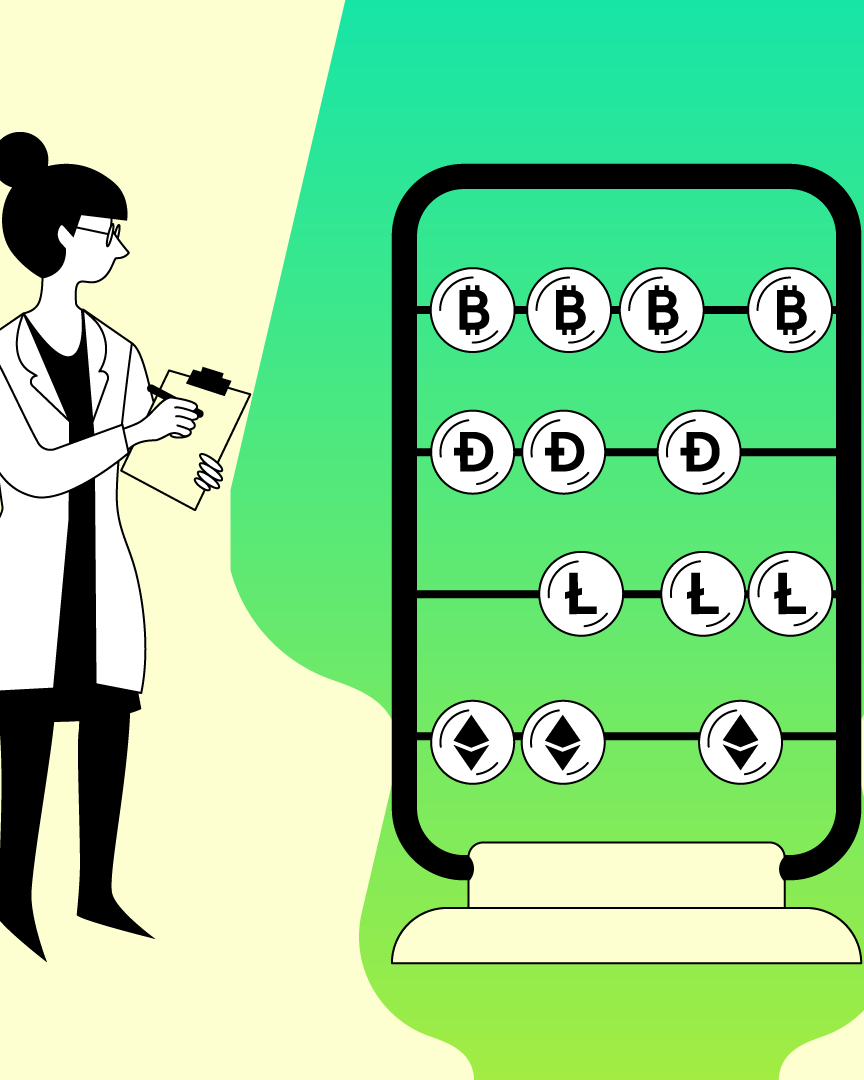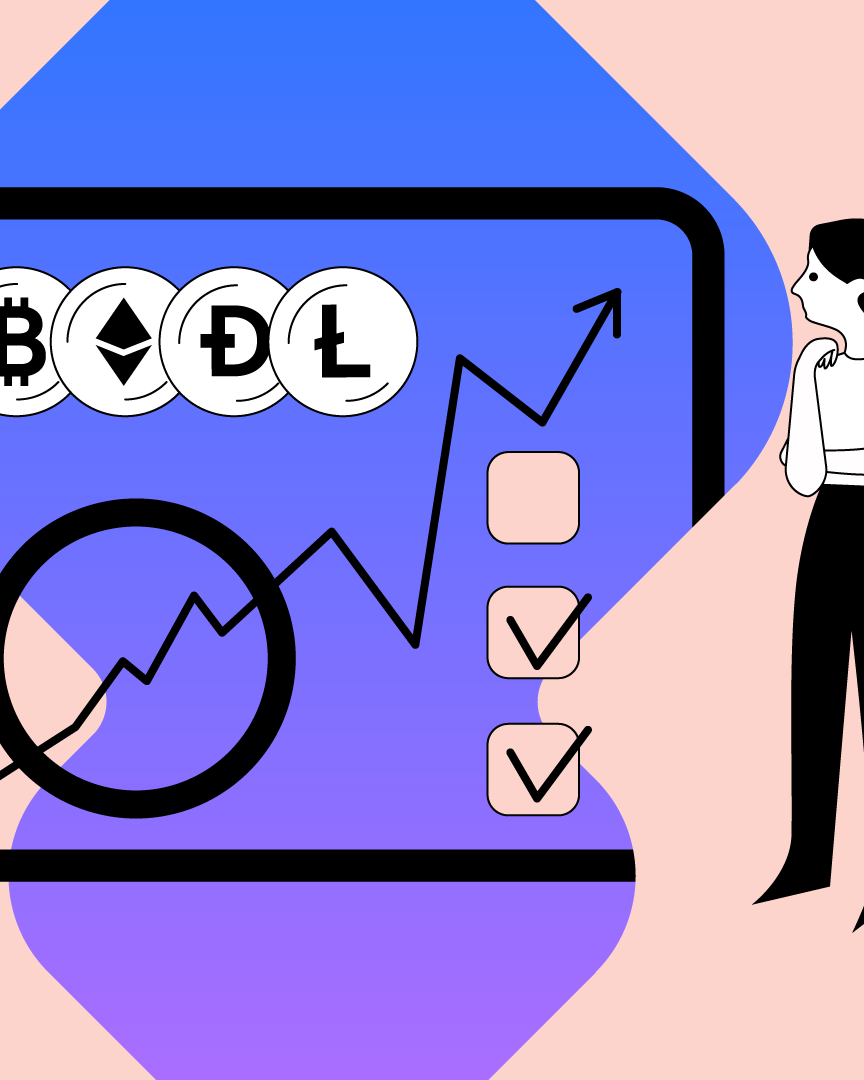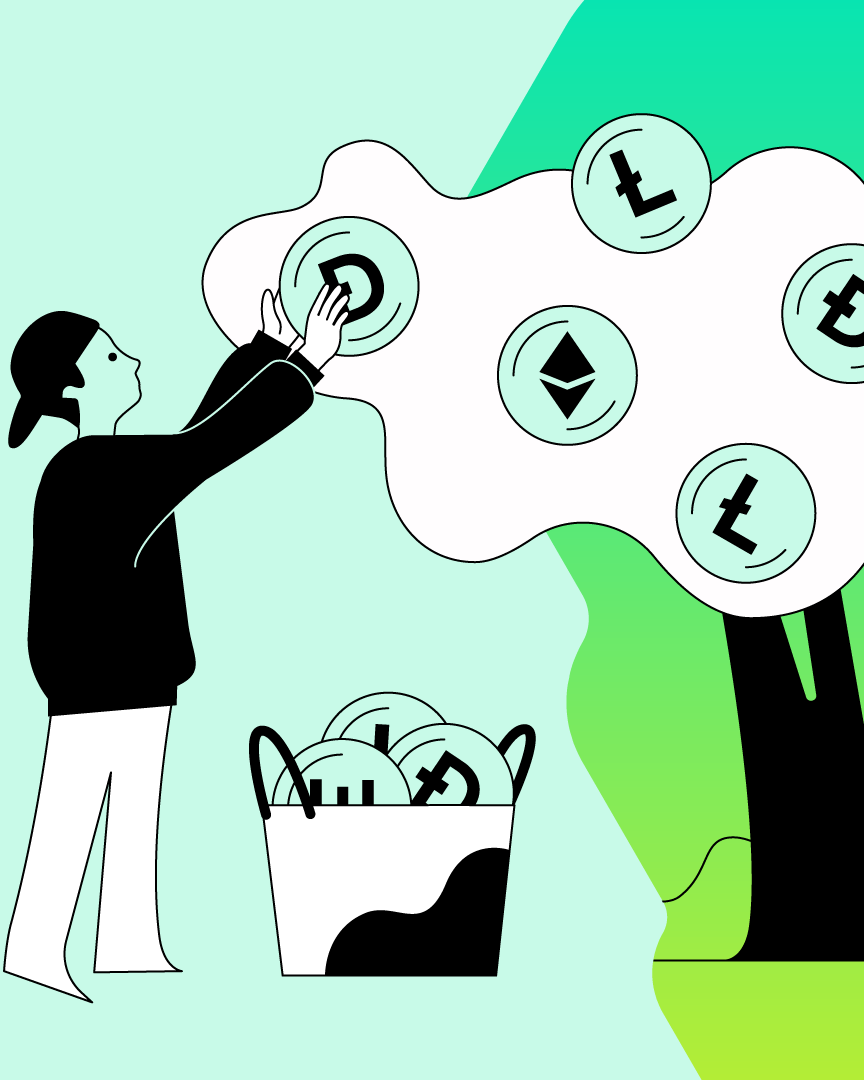1.24 Stablecoins: What Are They and How Do They Work?
A stablecoin is a non-volatile cryptocurrency whose price is tied to the value of a specific fiat currency.

Cryptocurrencies are generally highly volatile assets because their prices can dramatically fluctuate within a very short period. It isn't unusual for top cryptocurrencies like BTC and ETH to fluctuate a few percent in a matter of hours. At the same time, altcoins with lower market capitalization can rise or drop in value even more. For comparison, stocks usually move a few percent within a whole year.
That's why stablecoins were invented as a unique, non-volatile crypto asset class.
In this lesson, we'll explore stablecoins to find out what is a stablecoin, how do stablecoins work, and what are some of the most popular crypto stablecoins.
What Is a Stablecoin?
A stablecoin is a non-volatile cryptocurrency whose price is tied to the value of a specific fiat currency. The most popular stablecoins are tied to the value of the US dollar because the global market is generally focused on USD-based pricing. However, there are also stablecoins tied to the Euro and other popular fiat currencies.
Stablecoins are the digital, crypto version of fiat currencies, except private companies instead of central banks issue them.
Tether (USDT), the first stablecoin, was launched in 2014, five years after the launch of BTC. Before stablecoins, crypto traders had to store their whole crypto portfolio in the form of volatile coins like Bitcoin and Litecoin. The only way to avoid the unpredictability of crypto price swings was to cash out crypto into fiat currency. However, this was quite complicated because cashing out crypto through selling is slow and has tax implications.
With the invention of stablecoins, users could finally keep a portion of their crypto portfolio in a non-volatile form and avoid cashing out to save a portion of their profits. Instead, users could exchange, let's say, BTC for a stablecoin, and then once the price of BTC falls, they could buy back BTC for a discount and keep the profits.
The Role of Stablecoins on the Crypto Market
The primary use case of crypto stablecoins is reducing the volatility of conventional digital currencies. Stablecoins help traders reduce exposure to unpredictable market circumstances. Instead of cashing out with a bank account transfer, traders can easily convert between volatile cryptos and stablecoins through a crypto exchange platform.
Stablecoins are especially useful for navigating different crypto market cycles. During the bull market, when crypto princesses are booming, stablecoins are a handy asset for either making quick investments or taking profits. You can simply exchange your crypto for stablecoins and store them in a crypto wallet.
Regarding bear markets, stablecoins can help avoid the price crashes of volatile cryptos. Many traders use stablecoins as a critical asset for bear market exit strategies. After exchanging volatile cryptos for stablecoins, traders can either keep them for future investments or cash out into fiat currency.
Essentially, stablecoins alleviate the pressure of crypto volatility and lower the risk of incurring losses due to sudden price falls.
Fiat-Collateralized Stablecoins
There are various types of stablecoins depending on their operating mechanisms and what type of col lateralization they use to maintain their peg to a specific fiat currency.
Fiat-collateralized stablecoins are the most popular type of crypto stablecoins on the market. The companies that issue these stablecoins keep the exact same amount of fiat currency as the amount of their stablecoins in a dedicated bank account.
These bank accounts are subject to regular third-party audits to ensure that the stablecoins are really backed by fiat currency in a 1:1 ratio.
To issue a new unit of a fiat-collateralized stablecoin tied to the USD dollar, for example, the issuer needs to deposit 1 USD into its dedicated reserve bank account.
Crypto-Collateralized Stablecoins
Instead of using fiat currency, crypto-collateralized stablecoins use volatile digital currencies as collateral to maintain their value. Since cryptos like BTC or ETH are highly-volatile, these stablecoins must be heavily over-collateralized to ensure the stablecoin maintains its fiat-currency peg despite crypto price fluctuations.
Crypto-collateralized stablecoin issuers usually keep the collateral's value at least 20% above their stablecoin supply's total market capitalization.
In times of extreme price volatility, issuers of crypto-collateralized stablecoins tend to pour additional funds into the collateral treasury to prevent their stablecoins from losing their peg. That's' why the companies behind these projects either operate DeFi protocols or use liquidity-providing services on other DeFi platforms to ensure a constant inflow of fresh crypto assets.
Algorithmic Stablecoins
Unlike fiat and crypto-collateralized stablecoins, algorithmic stablecoins either don't use any collateral or only use partial crypto collateralization for emergency cases.
An algorithmic stablecoin uses a computer algorithm to automatically increase and decrease the number of coins based on current market conditions. The algorithm aims to maintain the value of the stablecoins by conducting buy and sell orders of a secondary crypto asset from the issuer's treasury.
While the concept is quite innovative, it's also risky. In 2022, TerraUSD (UST), the largest algorithmic stablecoin at that time, collapsed in an epic meltdown that caused the USD to de-peg from the US dollar and rapidly fall to a fraction of a US dollar, leaving investors without billions of dollars worth of investments.
Popular Stablecoins
Let's look at some of the most popular stablecoins on the market.
Tether (USDT)
Tether is the original stablecoin. The project was launched in 2014, and it was a revolutionary innovation in the crypto market at that time. USDT allowed investors to avoid crypto volatility by storing a portion of their portfolio in an asset tied to the US dollar.
USD Coin (USDC)
USD Coin is the second largest stablecoin on the market. USDC was issued by the Centre consortium in 2018 as a fiat-collateralized stablecoin tied to the US dollar and backed by fiat currency on a 1:1 ratio. USDC and USDT are vital assets for crypto trading pairs on most leading crypto exchanges. Moreover, numerous trading platforms convert user fiat-currency deposits into USDT or USDC, allowing them to purchase cryptocurrencies quickly.
Dai (DAI)
Dai is the largest algorithmic stablecoin. It's based on the Ethereum blockchain and issued by MakerDAO, a decentralized autonomous organization that governs the Dai project. Members of MakerDAO make key decisions regarding Dai, such as how the project's treasury is managed, as well as essential changes to the operating mechanism of Dai. The Dai stablecoin relies on Ethereum as the primary collateral currency, and users can generate new Dai coins by depositing collateral in MakerDAO Vaults on the Maker Protocol.
True USD (TUSD)
True USD is another leading fiat-collateralized stablecoin pegged to the US dollar; however, unlike USDT and USDC, TUSD has a live, on-chain attestation feature that lets third parties ensure that USD backs all TUSD at all times. Anyone can access the necessary data through the project's website at all times.
AVERTISSEMENT
Ce document ne constitue pas un conseil en investissement, ni une offre ou une sollicitation d'achat d'actifs en crypto-monnaie.
Ce matériel est uniquement destiné à des fins d'information et d'éducation générales et, dans cette mesure, il ne donne aucune garantie, ni ne doit être interprété comme tel, quant à la fiabilité, l'exactitude, l'exhaustivité ou la justesse du matériel ou des opinions qu'il contient.
Certaines déclarations contenues dans ce matériel éducatif peuvent se rapporter à des attentes futures qui sont basées sur nos opinions et hypothèses actuelles et impliquent des incertitudes qui pourraient entraîner des différences entre les résultats, performances ou événements réels et ces déclarations.
BB Trade Estonia OU et ses représentants, ainsi que les personnes travaillant directement ou indirectement avec BB Trade Estonia OU, n'acceptent aucune responsabilité découlant de cet article.
Veuillez noter que l'investissement dans les crypto-monnaies comporte des risques en plus des opportunités décrites ci-dessus.




















